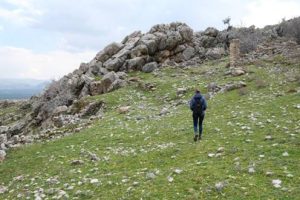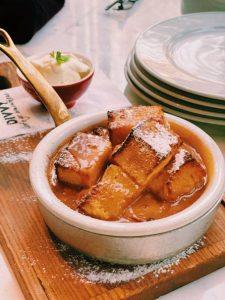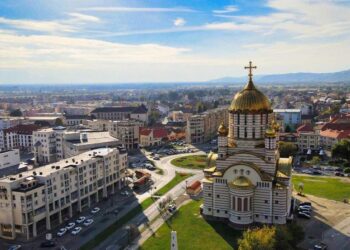Lebanon, known for its wonderful landscapes, is in the Middle East. With about 4.5 million people living in Lebanon, it figures on the top-ten list of the most populous countries in the Mediterranean region, with Arabic and French as its official language. Beirut serves as Lebanon’s capital.
With stunning European-styled architecture, world-famous food, flourishing art, a culture entirely distinct from other countries nearby, and numerous UNESCO World Heritage Sites, Lebanon is a fascinating, modern destination. Enjoy ultimate flying on board Middle East Airlines, which offers flights to Beirut from Dubai, Riyadh, Amman, Kuwait, and Jeddah.
The country has a lot to offer, from the history and legacy of Byblos and Baalbek and the arts in bustling Beirut to delicious food and various activities like mountain biking and hiking in the nature reserve of Al-Shouf Cedar Nature Reserve. The friendliness of its people, the natural beauty of its surroundings, and the coexistence of various religious and ethnic groups that make up its population have always been hallmarks of Lebanon.
What Makes Lebanon a Country of Contrasts?
Lebanon is known for being full of contrasts. Living in Lebanon, you come across many contrasts and a few of them to mention are:
- Climate – Snow and Sand
The interior of Lebanon has a continental climate whereas the coast has a Mediterranean climate. During winter the temperature ranges from 14 to 15 degrees Celsius and it also rains a lot. Constant sunshine, sea breezes, and hot, muggy weather define the summer season.

Image Resource: unsplash.com
The Bekaa Valley is cooler than the coast in winter. The days are hot but the nights are cool in summer because of the altitude. Furthermore, this place experiences a lot of precipitation. Months between May and October are better for a beach vacation. The Lebanese coast experiences hot, dry summers between June and September) and winters are rainy and cool between December and March, with 15-degree Celsius average temperature.
- A Mixture of New and Old
When you walk through Beirut, you will find high-rise condos and malls next to buildings damaged by bombing and with bullet holes on all sides. The city’s blend of the new and the old is one of its most perplexing features. However, there are not only old buildings, which are war-ravaged ones but also those going to fall apart when occupants are still within.
Some had bullet holes all over the top floors, huge holes on the side of the buildings by bombing, and abandoned structures that look like skeletons. Though the majority of Beirut was reduced to ruins after the civil war it is trying to renovate these structures and rebuild its downtown.
- Conservatism vs. Westernisation
Before the Civil War, various religions and civilizations that make up Lebanon coexisted very peacefully. However, the battle caused a significant rift between various groups of interests and religions. Modern Lebanese society has learned to deal with this issue. Violence-related problems do now and then arise, but they are the exception rather than the rule.
Hence, when visiting Lebanon, you can essentially encounter two separate societies. You can clearly come across a more Western-style lifestyle in locations where Christians predominate. There are also entertainment places like large clubs, pubs, and shopping centres.
Unbending cultural rules follow in the southern part of Muslim regions. There are also a few ethnic neighbourhoods, such as the Armenian community. As far as fashion is concerned in Beirut, it accepts anything, conservatism, and Westernization. Nobody cares about it.
- Nutritious Cuisines and Food Crises
Whether you eat at a neighbourhood cafe, a street stall, or a brand-new, gleaming restaurant, the food has always been incredibly tasty and fresh. Why is Lebanese food so loved and favoured by so many people worldwide?

Image Resource: unsplash.com
Its nutritive, healthful, and sustaining nature is one factor. Fresh ingredients, such as legumes, grains, and vegetables, which offer vital nutrients and fibre are used in many recipes.
It is simple to include a variety of nutrients in every meal because they are used in a wide range of dishes, including stews, salads, and dips. The rich and varied flavours of Lebanese food are another aspect of its prominence.
Dishes have a distinctive and rich flavour because of the use of herbs, spices, and fragrant vegetables like garlic, parsley, and onions. Moreover, several cooking methods, including baking, grilling, and stewing, are used in Lebanese cuisine to enhance the flavours of the dishes. Lebanese food is renowned for its flavour, nutritional benefits, and cultural influences.
Contrarily, Lebanon experiences a rise in food prices owing to its reliance on imports and the depreciation of its currency. Most basic food items, including meat, dairy, rice, wheat, seeds, nuts, and oil, are imported from other nations. Even locally grown produce like fruits, vegetables, and legumes are expensive in Lebanon.
It is the right time to plan and book your tickets to Beirut with Middle East Airlines for the best deal and discount. You can check in online though it is not mandatory.







